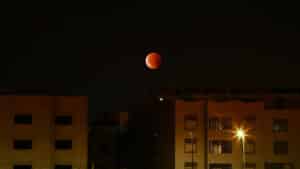The Hanukkah story is no fairytale. The events surrounding Antiochus IV and his rule of terror are a matter of historical fact, as archaeology is now able to verify. The news has just broken that a treasure trove of coins has been discovered earlier this year in the Judean desert, near the Dead Sea. Coins are so important to archaeology because they give reliable evidence of dates and names of people in power. In addition, clusters of coins like this left hidden usually indicate times of conflict.
Eitan Klein of the Israel Antiques Authority, explains: “In general when we find a cache of coins, they tell us a story of war. Otherwise people don’t run off and leave their life savings…You don’t just go off and leave NIS 30,000 in a cave”. Pointing out the significance of the find, he added, “Here, we have good proof that people really were fleeing.”1
But fleeing what, you may ask?
The Hanukkah story is told in the books of 1 and 2 Maccabees which are among several books from the 400 year “intertestamental” period of prophetic silence between Malachi and Matthew. These Apocryphal works are historically helpful in piecing together what happened during that period, but the majority of Bibles do not consider them to be part of the God-inspired canon. The books of the Maccabees describe how the Jews, under the Hasmonean dynasty, led a revolt against the Greeks who became increasingly oppressive. Judah Maccabee was one of the family of Hasmoneans who played a key role in the uprising.
“At that time many who were seeking righteousness and justice went down to the wilderness to live there, they, their sons, their wives, and their livestock, because troubles pressed heavily upon them. And it was reported to the king’s officers and to the troops in Jerusalem the city of David that those who had rejected the king’s command had gone down to the hiding places in the wilderness.” (1 Maccabees 2:29-31)2
The stash of coins was discovered last May, buried in a wooden box in the depths a cave near the Darageh Stream Nature Reserve, proving that Jewish people really did flee to the wilderness at that time. The coins date back 2,200 years ago, and were minted from 176-170 BC, very shortly before the time when the Jewish people rose up against the Seleucid (Greek) Empire under Antioch IV. Minted by Ptolemy VI, King of Egypt, the coins tell of the time when Ptolemy’s uncle, Antiochus IV Epiphanes (which means “god manifest”, “the glorious/illustrious”3), reigned over the whole region. It was in 167 BC that Antiochus started imposing harsh laws limiting religious freedom.
Jewish people were no longer free to read the Torah or practice their faith. As a result, many fled to the wilderness, taking their savings, and some prepared to fight back to reclaim their freedom.
Antiochus IV Epiphanes was something of an antichrist figure, and Daniel chapter 11 seems to prophesy with remarkable accuracy the events that unfolded. Like much of biblical prophecy, its fulfillment at one point in history does not mean it will not also be fulfilled at a later time on another level, but in some measure, the Hanukkah story of oppression of God’s people, the defilement of God’s house, and followed by the rededication of the temple, was a foreshadowing of events still to come. Also in prophetic literature, we see Zechariah speak of a time when the Jews and Greeks would clash:
I will rouse your sons, Zion, against your sons, Greece, and make you like a warrior’s sword. Then the Lord will appear over them; his arrow will flash like lightning. The Sovereign Lord will sound the trumpet; he will march in the storms of the south, and the Lord Almighty will shield them. They will destroy and overcome with slingstones. (Zechariah 9:13-15)
This passage in Zechariah speaks of the coming of the Messiah in the end times, but there was also a fulfillment on some level about the time of the Maccabees, as there was for Daniel 11. Interestingly, another recent find connected to the Hanukkah story was the discovery of an ancient slingstone from the same time period!4 Although many such slingstones are found in Israel, this slingstone from 2,200 years ago has an inscription in Greek, and may have been used against the Jewish Hasmoneans during the events of the Hanukkah story. However, history tells us that in the end it was the Hasmoneans who overcame. The temple was rededicated to God (Hanukkah means “dedication”).5 The inscription on the Greek slingstone invokes the name of Greek gods, but the word “Maccabee” (מכבי), the name given to the Hasmonean warriors, is short for a powerful phrase in Hebrew:
מי כמוך באלים יהוה
Mi kamocha ba’elim Adonai
This refrain is taken from the song after the parting of the Red Sea in Exodus 15:11 and means,
“Who is like you, O Lord, among the gods?”
It’s a victory chant sung by Miriam and the people of Israel after the defeat of the Egyptians. It has been applied also to the Hanukkah story after the defeat of the Greeks, and dare I say, it will also be sung to our God when He comes in victory to defeat His enemies at the end of time. There is none like Him!
- Times of Israel, 2,200-year-old coin hoard gives hard proof of Book of Maccabees, say archaeologists, Amanda Borschel-Dan, 13th December 2022
- Bible Gateway, 1 Maccabees Chapter 2
- Jewish News Syndicate, 2,200-year-old coins first evidence in Judean desert of Maccabean revolt, 13th December 2022
- Times of Israel, 2,200-year-old Greek sling bullet may have been used against Jews in Hanukkah story, Michael Bachner, 8th December 2022
- The holiday of Hanukkah is also known as the “Festival of Dedication” as mentioned in John 10:22
Photo by Eli Levit on Unsplash
















